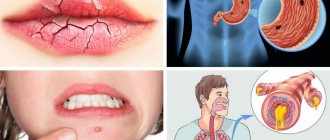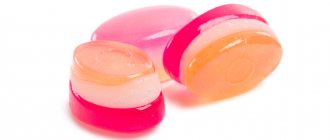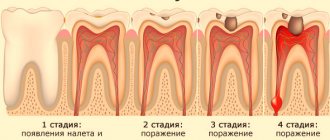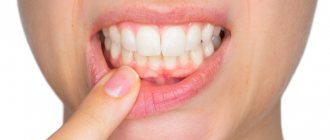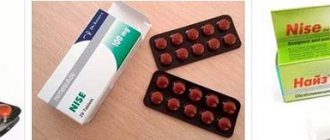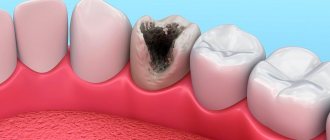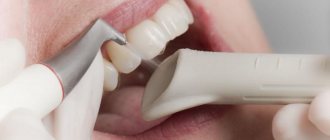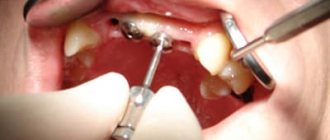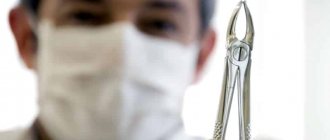In the article we will look at what chewing efficiency is according to Agapov.
This concept reflects the most important indicators of the condition of the teeth and jaw structure. This is the strength of the muscle endings of the lower jaw that perform chewing movements. It is necessary for crushing, biting and crushing food. This indicator is measured in individual areas of the dental system. There is also such a thing as gnathodynamometry, which is a technique for measuring the pressure of the muscle fibers of the masticatory apparatus, as well as the resistance of dental tissues to jaw compression. This method is implemented using a special device called a gnathodynamometer.
Anatomical features of abutment teeth
Chewing force is the physiological pressure exerted by the muscles of the mandibular structure. Abutment teeth play an important role in this process, helping to crush food and form a partially chemically processed food bolus for later ingestion.
To assess chewing efficiency, the strength and anatomical structure of all elements of the jaw structure are of great importance. The force of physiological pressure is taken to be the compression power of the weakest of the supporting teeth.
This value is determined based on the following features of the morphological structure:
- chewing surface area;
- number of roots;
- degree of tuberosity;
- the interval between the supporting tooth and the angle of the mandibular bone;
- functional state of the periodontium - a complex of soft tissues surrounding the dentin that hold the incisor in the alveolar bed;
- transverse canals of the cervix.
Abutment teeth are used to secure dentures when restoring chewing function using an artificial structure. They are selected based on the results of a comprehensive diagnostic examination.
The dentist studies the type and characteristics of the bite, the relationship of the proposed supporting tooth with neighboring ones, and the general condition of the periodontal tissues. The prosthetist evaluates the mobility and strength of the dentin element. What matters is the proportion between the length of the root of the abutment tooth and the size of the crown being installed.
Chewing efficiency according to Agapov is the volume of crushed food over a certain period of time. This factor is important when choosing pillar elements for installing a bridge structure. Formula for the sum of the coefficients for each side of the jaw apparatus: 0+5+6+4+4+3+1+2 = 25%
Method of restoring teeth of the 2nd class of decay
Among the clinical cases of this category, deep carious cavities and failed fillings are most common. The main feature of the second class is that with fairly high destruction - up to 50% of the chewing surface - the main outlines of tubercles, ridges, parts of the ridges, etc. are still preserved. Having such landmarks at our disposal, we can easily continue the external contours of the preserved occlusal elements and get a chewing surface very close to the original. For this, the traditional method of layer-by-layer restoration is used, without any changes. The only addition that could help make the restoration more comfortable is the use of modeling tools in a specific sequence.
Algorithm for restoring the chewing surface. Three Tools Concept
Figure 12 shows the initial situation.
Rice. 12
Figures 13-15 show the layer-by-layer introduction of material into the cavity: a layer of dentin, a layer of chromatic enamel (the composite is distributed throughout the cavity without polymerization), a layer of surface enamel.
Rice. 13
Rice. 14
Rice. 15
To adapt the material, it is convenient to use a brush slightly moistened with adhesive (Fig. 16).
Rice. 16
Next, tool No. 1 is used - a large plugger for preliminary marking of all chewing elements (Fig. 17).
Rice. 17
They also outline the lines of future fissures and remove excess material. Modeling continues with tool No. 2 - a small plugger, which reproduces all the main forms, brings out additional ridges, side ridges, secondary recesses, and also emphasizes fissures of the first order (Fig. 18).
Rice. 18
At this stage, the excess composite is finally removed. In some cases, a small brush with lubricant can be used to make anatomical transitions smoother. The last tool (No. 3) is a sharp probe for creating the thinnest elements and emphasizing fissures (Fig. 19).
Rice. 19
After this, polymerization of the composite material is carried out (Fig. 20).
Rice. 20
As a final element, the pigmentation of the fissures can be reproduced with composite paints using a thin endodontic file (Fig. 21-23).
Rice. 21
Rice. 22
Rice. 23
Replacement of an old restoration [Clinical Case]
In (Fig. 24) the situation before treatment. An old, failing filling with obvious secondary changes in the surrounding tissue.
Rice. 24
The working field is isolated (Fig. 25) and the carious cavity is prepared (Fig. 26).
Rice. 25
Rice. 26
The quality of treatment is controlled by a caries detector. The deepest areas of the cavity were also stained, but in this case it was not the demineralized tissue that was stained, but the tertiary reaction dentin. Due to the fact that this type of dentin is formed compensatory in response to the action of irritants and is not structurally complete, has cellular inclusions and voids, it is also susceptible to indication by a caries detector. This dentinal bridge is usually the last stable barrier to the pulp chamber and should not be removed. Next, the cavity is sandblasted (Fig. 27) and adhesively prepared with the 5th generation XP Bond™ system (Fig. 28).
Rice. 27
Rice. 28
After thoroughly drying the adhesive before polymerizing it, a very thin layer of low modulus SDR™ composite was applied to the dentin and then co-polymerized. The purpose of this technique is to stabilize the hybrid zone, as well as to prevent the formation of an oxygen-inhibited layer in the adhesive interface.
Part of the cavity is filled with SDR™ composite (Fig. 29).
Rice. 29
It has a high ability to self-adapt, very low polymerization stress and optical characteristics similar to dentin. A portion of Ceram•X™ duo+ D3 composite is applied on top of the SDR™ material to imitate dentin (Fig. 30), then a layer of Esthet•X® HD YE surface enamel (Fig. 32) and a layer of Esthet•X® HD A3 chromatic enamel (Fig. 31).
Rice. thirty
Rice. 32
Rice. 31
The composite spreads over the surface, but does not polymerize. Figure 33 is a view after an instrumental simulation carried out in strict accordance with the three-instrument concept described above.
Rice. 33
Next, the characteristics were reproduced (Fig. 34, 35).
Rice. 34
Rice. 35
Figures 36, 37 show the view after occlusal integration, finishing and polishing.
Rice. 36
Rice. 37
It should, however, be remembered that in order to successfully perform a restoration using the traditional technique, the doctor certainly needs to have some experience and developed skills in anatomical modeling. The most effective way to learn to accurately reproduce the chewing surface is constant practical training.
You need to draw teeth, sculpt them from plasticine, grind them from plaster, model them from wax, reproduce them in the mouth with a composite, etc. All this must be done, guided by the general principles of shaping and knowledge of the myotopography of anatomical elements. Gradually, a sense of form will develop, the ability to “read” characteristic anatomical details, some dependencies will be revealed, and in the end a complete understanding of the entire process of reconstruction of the occlusal surface will come.
Requirements for abutment teeth
Such units must meet several criteria.
Key Requirements:
- intact (undamaged and uninfected) periodontal tissues;
- sufficient area and height for installing a clinical crown;
- proper occlusive properties;
- location at a short distance from the defect being corrected.
- healthy tissues of the tooth chosen as the supporting one;
- integrity of the enamel coating.
These requirements are almost never fully met.
Usually, teeth that require dental intervention or have already been treated are located near the defective area of the jaw apparatus. When choosing support units, take into account the high mechanical stress created by the prosthetic structure on the periodontal tissue and bone fibers of the tooth. This increases the risk of developing a pathological process and increases the frequency of exacerbations of chronic dental diseases.
Installation of the bridge structure on the selected supports is carried out only after a detailed diagnostic examination and elimination of all defects that can be treated. Compliance with the requirements for the supporting teeth ensures proper functionality of the prosthesis.
Patients seeking dental care have virtually no ideal conditions for crown placement. It is permissible to use teeth with caries as supports after carrying out the necessary therapeutic procedures.
Inflammation of the pulp is eliminated by obturation (clogging) of the canals with filling material. Teeth with chronic periodontitis can be used as supporting teeth after performing the required therapeutic measures.
Crowns and prosthetic bridges are installed even on incisors affected by a fistula or cyst, provided that the size of the root part is sufficient for installation. The top of such a tooth is first resected and the internal cavity is filled.
Condition assessment
When crushing and chewing solid food, fragments of the jaw rows experience increased load in both the vertical and lateral planes. The force and vector of pressure are determined by the type of dental element and its preserved functional parameters.
Standard level of load on teeth of different types:
| Variety | Pressure force, kg |
| Incisors | 5-10 |
| Fangs | 12-15 |
| Premolars | 15-20 |
| Molars | 20-30 |
These values are not maximum for the indicated teeth and surrounding periodontal tissues. Half of the maximum permissible level of chewing load is indicated. The remaining 50% is a reserve used for prosthetics.
Chewing efficiency according to Agapov provides for an accurate calculation of the expected load before installing crowns and bridge structures. When choosing reference points, the functional state of all anatomical structures and morphological complexes involved in the formation of the food bolus is assessed.
Elements that will serve as the basis for an artificial structure for a long time are examined for:
- health of periodontal tissues;
- features of bite;
- occlusal interaction of chewing fragments in the area of the defect being eliminated;
- stability in the alveolar bed;
- ratio of the size of the crown and the root of the tooth;
- quality of filling, if it was performed;
- shade of enamel coating;
- level of mechanical abrasion;
- placement and spread of teeth in the jaw row.
Assessment of the anatomical state of the masticatory apparatus is carried out:
- visual inspection;
- sensing methods;
- percussion;
- X-ray examination;
- palpation of the alveolar process.
To clarify the mechanism of occlusal interaction, a special diagnostic cast model is used. An x-ray allows one to assess the presence and degree of atrophy of dentin tissue and the morphological complex of the periodontium.
The ratio of the inner and outer surfaces of the alveolar bed is examined to determine the stability and stability of the abutment tooth. If mobility is detected, a reinforcing splint is installed, connecting it to nearby elements.
The anatomical configuration of the crown is important. It is especially important when installing a prosthesis on a clasp system. Relative contraindications for using a tooth as a support include a cone-shaped shape and insufficient height. In such a situation, the extension procedure is performed.
Causes and signs of deviations
Chewing function is impaired due to caries, periodontal disease, and mechanical damage to the jaw apparatus.
Etiological factors are divided into:
- infectious;
- pathological;
- traumatic.
During caries, pathogenic microorganisms destroy the mineral-organic components of the outer enamel coating and dentin. As a result, there is a deviation of chewing efficiency from the established normal indicator.
With the progression of dental caries, acute inflammation of the pulp and connective fibers of the slit-like cavity between the tooth root and the alveolar plate occurs.
A common cause of chewing dysfunction is periodontal disease. The pathological condition is characterized by dystrophic changes in the connective fibers.
Teeth lose stability and become loose. Typical signs of periodontal disease are bleeding gums and pain when pressing on the segments of the jaw row affected by the pathological process.
The main reasons for the development of the disease:
- bacterial and viral infection;
- impaired metabolism;
- digestive dysfunctions;
- hypovitaminosis;
- unbalanced diet.
Chewing efficiency, determined by the Agapov method, often deviates from the norm due to malocclusions and anatomical destruction of individual elements of the jaw apparatus.
Congenital or acquired deformation of the dentition can lead to such a disorder. The loss of a certain number of masticatory elements, provoked by pathological reasons or functional overload, causes anatomical distortions of the morphological complex of mastication.
Dentists cite disturbances in the functioning of the adductor muscles of the dental mechanism as one of the reasons for the decrease in the efficiency of grinding food.
Etiological factors of this condition:
- spasms due to tetanus or meningitis;
- neurological disorders;
- paralysis of individual muscles;
- previous traumatic brain injury;
- infectious lesions.
Extensive or local inflammation in the dental cavity leads to impaired chewing function. These include gingivitis and stomatitis. They make it difficult to form a nutrient bolus and its chemical treatment with salivary fluid.
Such pathologies are manifested by an increase in the pain sensitivity of dental cells and the occurrence of anaphylactic reactions. A separate etiological category is diseases of the temporal and mandibular joints.
Significantly reduce chewing efficiency:
- arthritic destruction;
- arthrosis – dystrophic changes in articular cartilage;
- tendonitis – inflammatory deformation of tendons;
- synovitis
Elderly patients are most often susceptible to inflammation of the synovial membrane of the joint capsule.
Temporomandibular joint
This is a paired joint; the heads of the lower jaw and the articular cavities of the temporal bone participate in its formation. The movements of the joint are rotational and sliding. When the mouth opens to a width of 12 mm, rotational movements predominate, after which sliding movements appear - the heads of the lower jaw begin to slide along the slope of the articular tubercle.
Of course, the temporomandibular joint has features that unite it with other joints of the human body, but there are also significant differences. These include the closure of teeth, which has a great influence on the position of the joint and the movements occurring in it.
Average values of pressure on teeth in kilograms
Chewing efficiency is measured by the dynamic method or the gnathodynamometric method using a special device. The average value for front teeth is 15-36 kg, and for molars – 45-78 kg. This indicator is taken into account when installing prostheses.
It determines the susceptibility of periodontal tissue to mechanical pressure and allows you to select the correct bridge structure. Average values are established based on practical observations.
In women, the chewing pressure on the incisor teeth is 20-32 kg, and in men – 25-45. N.I. Agapov compiled tables of distribution of the minimum, average and maximum pressure withstood by each element of the jaw row.
The total maximum endurance of the morphological periodontal complex surrounding the tooth for women is 936 kg, and for men – 1408. In practice, it is not realized, since the contractile power of the muscles of the jaw apparatus is limited to 390 kg.
Effect on jaw bones
The jaw bones, like all bone structures of the body, consist of a spongy and compact substance.
The bone beams of the jaws have a direction determined by their function. When the direction of load on individual teeth changes, the direction of the bone beams also changes. And with chewing load, buttresses are formed in the jaw - functionally oriented foci of compacted tissue.
The buttresses of the jaws transmit chewing pressure to the buttresses of the skull.
When the load is unbalanced, elastic deformation of the mandibular bone begins - on the side where the closure is complete and the jaw receives full load, the jaw bone bends to the bottom, and on the opposite side - to the top.
Principles of calculation
Gnathodynamometry is an outdated technique for determining the chewing ability of the muscles of the jaw apparatus, the endurance of the morphological complex of periodontal disease and dental elements. This method is rarely used in modern dental practice due to a number of significant disadvantages.
The gnathodynamometer determines only the pressure in the vertical plane, without taking into account the horizontal and radial compression forces. Therefore, the method does not give very accurate results. The spring in the device quickly deforms, which further distorts the readings.
With this measurement method, the result strongly depends on the psychosomatic state of the patient, which is unstable and can change several times throughout the day. The dynamic method allows you to make a more accurate judgment about the chewing ability of the jaw apparatus.
It takes into account all movements and the general condition of the dental complex:
- neuroreflex interactions;
- glandular system;
- motor functions of muscles;
- soft tissues of the oral cavity;
When making prosthetics, the functional chewing test developed by S. E. Gelman and the physiological test by I. S. Rubinov are often used. Their essence is similar and consists in grinding a certain amount of product (almonds or walnuts) with jaws within a specified time.
Load calculation
When choosing and installing dentures, the load capacity of the supporting elements plays a decisive role. The average and maximum values for the surrounding periodontal tissues are calculated. There is a special method for determining these values, which is used in prosthetics.
Chewing efficiency according to Agapov is the main parameter showing the ability of the supporting teeth and the morphological complex of the periodontium to withstand a certain pressure for a long time without negative consequences. This indicator is expressed in an individual coefficient assigned to each unit of the jaw row.
When determining the value, the chewing ability of the entire mechanism for preparing the food bolus for swallowing is taken as 100% efficiency. The starting point is the weakest unit of the dentition. This is a small incisor that is assigned a value of 1%.
Agapov coefficients
This method of calculating the load-bearing capacity of each unit of the jaw row involves the use of a gnathodynamometer. The device is equipped with sensors located in a replaceable measuring part. The sensors are connected to a microammeter and contain a brass plate in their design.
Algorithm for measuring chewing efficiency:
- The patient is seated in the dental chair.
- A measuring element with load endurance sensors is immersed into the dental cavity.
- Next, you need to squeeze the inserted device with your teeth with maximum force.
- The indicator of chewing efficiency is recorded on the scale.
The final result is obtained by summing the coefficients of all elements of the jaw arch. Each tooth is assigned a percentage value from 1 to 6. The determination is made by the number of paired units of the lower and upper jaws. Single teeth are not actually involved in chewing.
Oxman coefficients
With this calculation method, chewing ability is calculated according to a specially developed anatomical and physiological scheme. The load susceptibility of each unit of the jaw row is assessed, taking into account the pressure surface area and the cutting edge.
The Oxman coefficient takes into account the topology of the dental plane and the physiological state of the roots. For this method of determination, it is important to study the features of the morphological structure of the periodontium and evaluate the functional and chewing value of each unit of the jaw row.
Based on this data, all elements are assigned coefficients of 1-6. The final result is obtained by summation. The difference between the endurance of periodontal tissues and dentin tissues, not exceeding 2 points, is considered normal.
Determination methods
Voltage measurement according to Agapov is carried out using an electronic gnathodynamometer by Perzashkevich and Rubinov. It includes specialized sensors that are built into the measuring head of a special removable attachment.
The sensor, which is connected to the microammeter, contains a brass plate. A man sits in a chair. It is very important that he is comfortable and psychologically comfortable. The specialist inserts a nozzle into the mouth between the jaws and the patient squeezes it with his teeth until pain occurs. Thus, the chewing pressure is displayed on the device scale at this moment. The sensor values are recorded. Gnathodynamic parameters can depend on many factors:
- person's gender;
- individual characteristics;
- existing diseases (periodontal disease, periodontitis and others);
- partial loss of teeth;
- age.
Decoding chewing coefficients
The effectiveness of the jaw mechanism depends on the food crushing abilities of the weakest link in the system - the small incisor. This is the constant from which the remaining coefficients are calculated. Each tooth is assigned a constant value. Any deviation is considered a decrease in the chewing efficiency of the entire jaw row.
The digestive value of dentin, according to this method, does not depend on the functional state of periodontal tissues. Tooth mobility in the alveolar bed does not affect the coefficient. This is a significant disadvantage of the calculation method proposed by Agapov.
In practice, during prosthetics, physiological Oxman corrections are made to it. Chewing units are assigned mobility classes. In the first of them, stability is considered absolute and taken as 100%. In class 2, chewing efficiency is 50%. The 3rd and final category is equivalent to the absence of a dental element.
Movements are performed simultaneously and evenly in the right and left joints
The articular head of the lower jaw has a cylindrical shape with a long dimension of about 2 cm, and a short dimension of about 1 cm. The convex part of the head in the joint is located directly opposite the articular tubercle, which, on the one hand, ensures its mobility in all directions, and on the other hand, does not allow stable position and makes it dependent on the closure of the dentition and the work of the masticatory muscles.
The articular disc divides the joint cavity into 2 independent sections, which are filled with a special joint fluid that reduces friction inside the joint. In the lower part, the articular head of the lower jaw rotates relative to the disc, and in the upper part, the disc moves relative to the articular fossa. The disc is thinnest in the center - about 1 millimeter, in the anterior part it is thicker - about 2 millimeters, and thickens more posteriorly - up to 3 millimeters.
The capsule of the temporomandibular joint is approximately one and a half millimeters thick and consists of 2 layers - an outer dense fibrous layer with blood vessels and nerves and a more delicate inner synovial layer.
Measures to be taken when supports are ineffective
The installation of additional rigidity elements on the prosthetic structure allows the installation of additional rigidity elements on the prosthetic structure to prevent the load endurance of the periodontal complex and hard dentin from being exceeded.
In dental practice, a method is used to reduce the functional area of the crown to the size of a premolar. Another option is to straighten the topology of the plane of the supporting unit with complete elimination of the tuberosity.
This allows the elements of the jaw arch to withstand greater mechanical load. To eliminate the insufficient chewing efficiency of supporting teeth, dentists create an additional contact area between the natural structures and the prosthetic structure.
This increases rigidity, increases load-bearing capacity and involves the periodontium in the physiological process of chewing food, even in the case of significant damage and reduced tissue functionality.
Reviews
Often it is the condition of the supporting teeth that stops the use of a prosthesis. Failure of a support and, as a result, replacement of prosthetics is a fairly common case.
If you have encountered a similar situation, tell us how it manifested itself and how it ended. You can do this by leaving a review at the bottom of the page.
Sources:
- https://FB.ru/article/425413/jevatelnaya-effektivnost-po-agapovu-metodyi-opredeleniya-printsipyi-rascheta-rasshifrovka-rezultatov
- https://zen.yandex.ru/media/id/5a91834cfd96b107992f8de2/5c05f509817f78040071456c
- https://zubovv.ru/protezirovanie/semnyie-p/pravila-vyibora-opornyih.html
- https://www.vash-dentist.ru/protezirovanie/semnyie-p/algoritm-vyibora-opornyih-zubov.html
Features of installing a bridge structure
Chewing efficiency according to Agapov requires compliance with several mandatory conditions for the installation of a jaw prosthesis. It is selected and designed in such a way as to level out the natural defects of the morphological complex.
The coefficient sum of the supporting units must exceed the table indicator of the chewing efficiency of missing teeth by 2 units or more. Select supports belonging to the same functional category.
Their number should fully compensate for the loss of natural chewing ability as a result of:
- alveolar dystrophy;
- pathological instability in the bed;
- insufficient dimensional proportion between the length of the root system and the height of the coronal segment;
- damaged state of the morphological complex of the periodontium.
Additional stiffening elements of the bridge structure are connected by splinting or integrated into the prosthesis to partially relieve the load from weakened support points.
In the oral cavity, periodontal injury can be suspected by the following symptoms:
- the tooth has become mobile
- the tooth has moved relative to the other teeth
- there is pain when tapping or chewing
- spontaneous pain in the tooth while the dental pulp is intact
- periodontal inflammation around the tooth
- violation of the gum contour around the tooth
- enamel cracks in the vertical direction
- excessive tooth sensitivity, especially to cold. This is most often associated with exposure of the neck of the tooth at the interface between the enamel and cement.
Clasp devices
The jaw arch units for attaching such a prosthesis must meet general requirements and special conditions. Before installing clasps, the supporting teeth are given the correct anatomical configuration by filing, grinding and building up.
Cone-shaped and too low supports with an exposed root collar are not suitable for such fastening. Elements with such defects are first brought into a form suitable for installing a crown, and then an artificial structure of anatomically perfect shape is installed.
It is necessary to ensure parallel arrangement of the supporting teeth to avoid distortion of the prosthesis. Minimal deviation when installing fixing clasp devices is allowed, but the use of holding devices requires strict parallelism.
It is necessary to ensure ideal interaction of the mandibular supports with similar elements located on the maxillary arch. When using an onlay or building-up dental composition on one of them, the bite will inevitably become distorted and chewing efficiency will not be achieved.
Therefore, complete symmetry is necessary. If necessary, I use a special occlusal foot or install a crown with a cervical protrusion. The latter option is used in case of hyperesthesia of the enamel coating or tilting of the support towards the defect being eliminated.
Clasps are installed along an imaginary straight line. It should pass through the center of the anchor points. Chewing efficiency is restored by a clasp design with support-retaining clasps. For it, the coefficient is calculated using the Agapov method, taking into account the additional load created by such a prosthesis.

